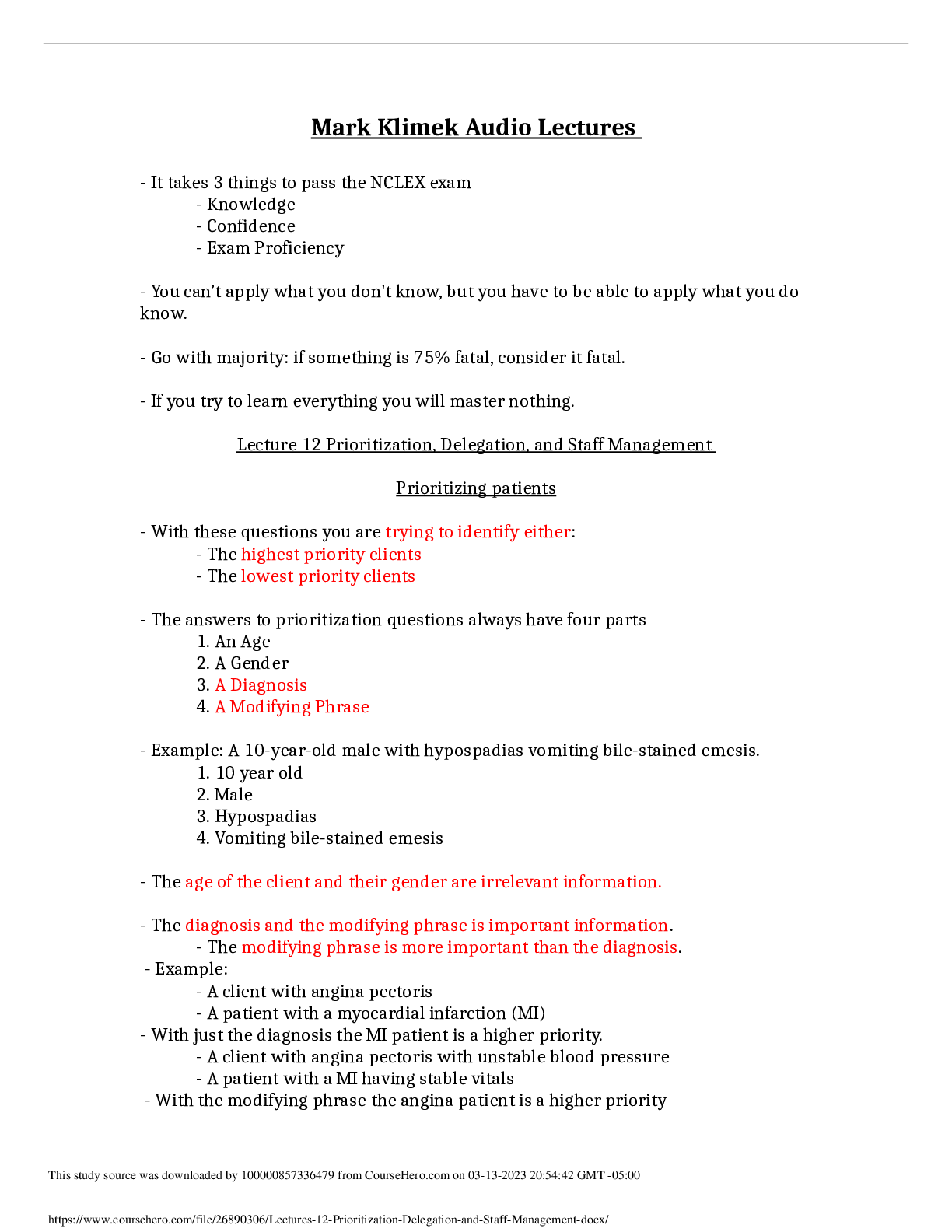MARK KLIMEK LECTURE #3 GRADED A+
Document Content and Description Below
CALCIUM CHANNEL BLOCKERS Calcium channel blockers are like valium for your heart. Calms the heart down. Indicators – tachycardia, tacharythmias Negative intropic, chronotropic, dromotropi ... c (relax your heart, calm it down) They treat – A (antihypertensives), AA (antianginal), AAA (anti-atrial arythmia) they treat atrial dysrhythmias and supraventricular contractions (SVT) Names – majority end in -dipine (amlodipine, nifedipine) & verapamil, cardizem (can be given as a continuous IV drip) Side effects – headache & HYPOtension (take BP before administering, hold if systolic is <100) CARDIAC ARRYTHMIAS QRS refers to – Ventricular P refers to – Atrial ATRIAL FLUTTER Rapid P wave repolarizations in a saw tooth pattern This study source was downloaded by 100000815926942 from CourseHero.com on 06-13-2021 20:41:16 GMT -05:00 https://www.coursehero.com/file/30072914/Mark-Klimek-Lecturesdocx/ This study resource was shared via CourseHero.com ATRIAL FIBRILLATION chaotic QRS depolarizations, heart rate is irregular TX: HEPARIN first, then ABCD VENTRICULAR FIBRILLATION Chaotic QRS depolarizations TX: defibrillation (shock them) VENTRICULAR TACHYCARDIA Wide bizarre QRS’s TX: Lidocaine & amiodarone 2 This study source was downloaded by 100000815926942 from CourseHero.com on 06-13-2021 20:41:16 GMT -05:00 https://www.coursehero.com/file/30072914/Mark-Klimek-Lecturesdocx/ This study resource was shared via CourseHero.com ASYSTOLE a lack of QRS repolarizations TX: epinehphrine & atropine PVC Periodic wide, bizarre QRS’S. If there are more than 6 PVCs in a minute, or 6 in a row, you elevate the priority to moderate. PVC are not priority. NOT necessary to contact HCP. TX: lidocaine & amiodorone LETHAL ARRYTHMIAS Asystole Ventricular fibrillation POTENTIALLY LIFE THREATENING Ventricular tachycardia (have a cardiac output, pulse) Atrial fibrillation Atrial flutter PVC 3 In order of This study source was downloaded by 100000815926942 from CourseHero.com on 06-13-2021 20:41:16 GMT -05:00 https://www.coursehero.com/file/30072914/Mark-Klimek-Lecturesdocx/ This study resource was shared via CourseHero.com HOW DO YOU TREAT SUPRAVENTRICULAR (ATRIAL) ARRYTHMIAS? Adenocard (adenosine – push in less than 8 seconds, fast and don’t worry about asystole) Beta blockers (-lol) Calcium channel blocker Digitalis (lanoxin, digoxin) CHEST TUBES Purpose re-establish negative pressure in the pleural space (negative is good in pleural space, makes things stick together) In a pneumothorax, chest tube removes air In a hemothorax, chest tube removes blood You have a patient with a chest tube in for a hemothorax, what would you report to HCP? 1. Chest tube is not bubbling 2. Chest tube drained 800 mL in first 10 hours 3. Chest tube is not draining (because it is not doing what it is supposed to do) 4. Chest tube is intermittently bubbling LOCATION OF CHEST TUBES Apical chest tube way up high, removes air because air rises (A for Apical) Basilar chest tube bottom of the lungs, removes blood (B for Blood) WHAT DO YOU DO IF A WATER SEAL BREAKS? 1. Clamp it (FIRST) 2. Cut broken device off of tube 3. Put the end of the tube in NS 4. Unclamp it (because you’ve reestablished the water seal) 4 BEST thing to do is put in This study source was downloaded by 100000815926942 from CourseHero.com on 06-13-2021 20:41:16 GMT -05:00 https://www.coursehero.com/file/30072914/Mark-Klimek-Lecturesdocx/ This study resource was shared via CourseHero.com WHAT DO YOU DO IF CHEST TUBE COMES OUT? 1. Cover hole with a gloved hand (FIRST) 2. Put on a Vaseline gauze dressing (BEST) 3. Put on sterile dressing and then tape on 3 sides. BUBBLING IN CHEST TUBES GOOD OR BAD? Where? Water seal INTERMITTENTLY (good, document it) Where? Water seal CONTINUOSLY (bad, theres a leak in the system, find it and put tape over till it stops leaking) Where? Suction control chamber INTERMITTENT (bad, suction is not high enough, too low, turn it up on the wall till its continuous) Straight catheter is to a foley cather Like a thoracentesis is to a chest tube RULES TO CLAMPING TUBES Never allowed to clamp tube for longer than 15 seconds without a doctors orders. Use rubber tipped double clamps (because it wont pierce the tube) CONGENITAL HEART DEFECTS TRouBLe or not Trouble defect is right to left shunt (blue, cyanotic) No trouble defect is left to right (pink, acyanotic) How do you know which heart defects are trouble? If it starts with a T it is trouble. WHAT DO ALL KIDS WITH CONGENITAL HEART DEFECTS HAVE? Murmur (because of shunting blood) They have an echocardiogram done FOUR DEFECTS OF TETROLOGY OF FALLOT? VarieD PictureS Of A RancH 1. Ventricular defect 2. Pulmonic stenosis 3. Overriding aorta 4. Right hypertrophy 5 This study source was downloaded by 100000815926942 from CourseHero.com on 06-13-2 [Show More]
Last updated: 3 years ago
Preview 1 out of 6 pages

Buy this document to get the full access instantly
Instant Download Access after purchase
Buy NowInstant download
We Accept:

Also available in bundle (1)
Click Below to Access Bundle(s)

MARK KLIMEK LECTURE Combinatios 2021 Graded A
MARK KLIMEK LECTURES
By Hannington 4 years ago
$21
4
Reviews( 0 )
$10.50
Can't find what you want? Try our AI powered Search
Document information
Connected school, study & course
About the document
Uploaded On
Jun 14, 2021
Number of pages
6
Written in
All
Additional information
This document has been written for:
Uploaded
Jun 14, 2021
Downloads
0
Views
131


.png)



 NCLEX.png)
BURN’S PEDIATRIC PRIMARY CARE NCLEX.png)
BURN’S PEDIATRIC PRIMARY CARE NCLEX.png)


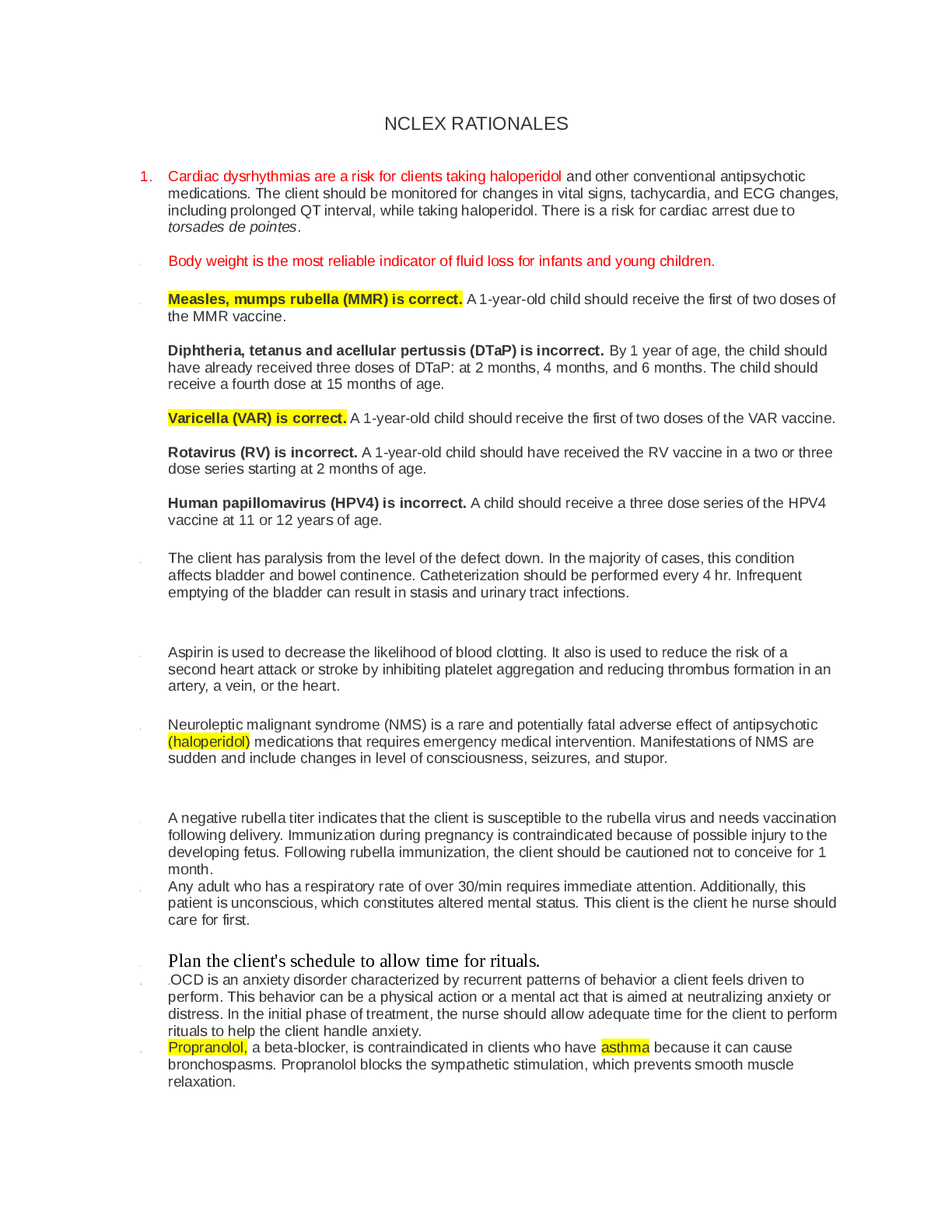
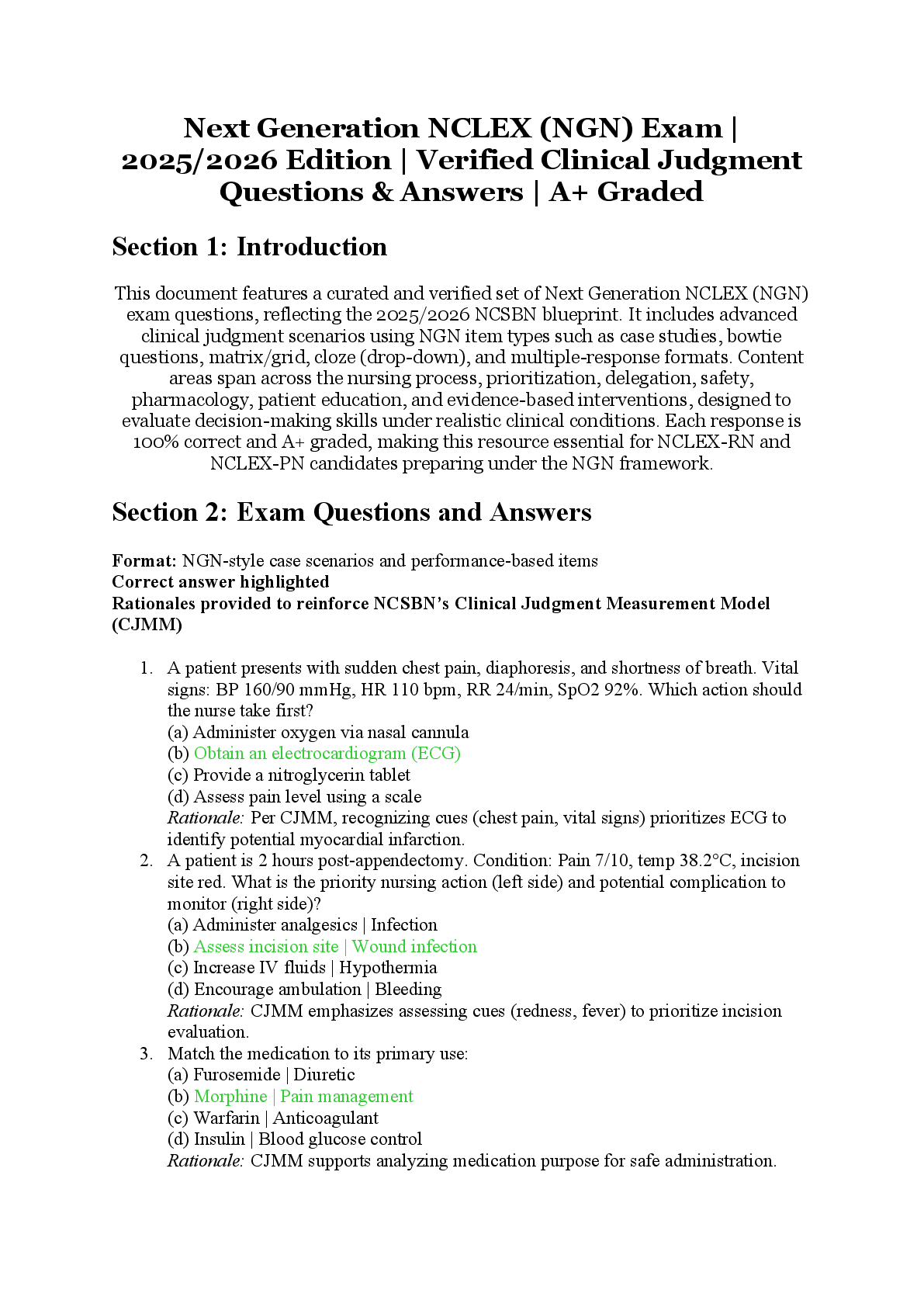
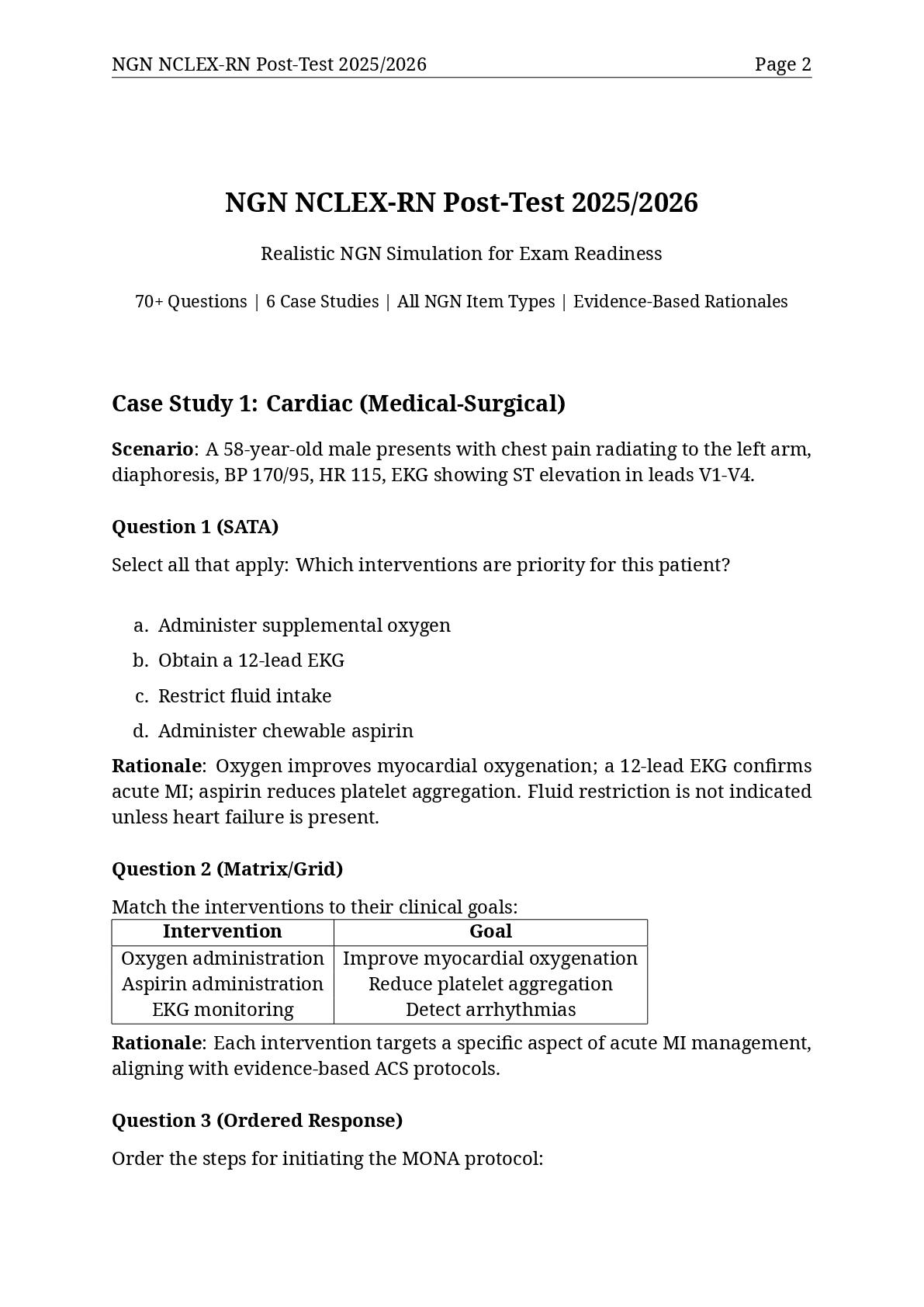
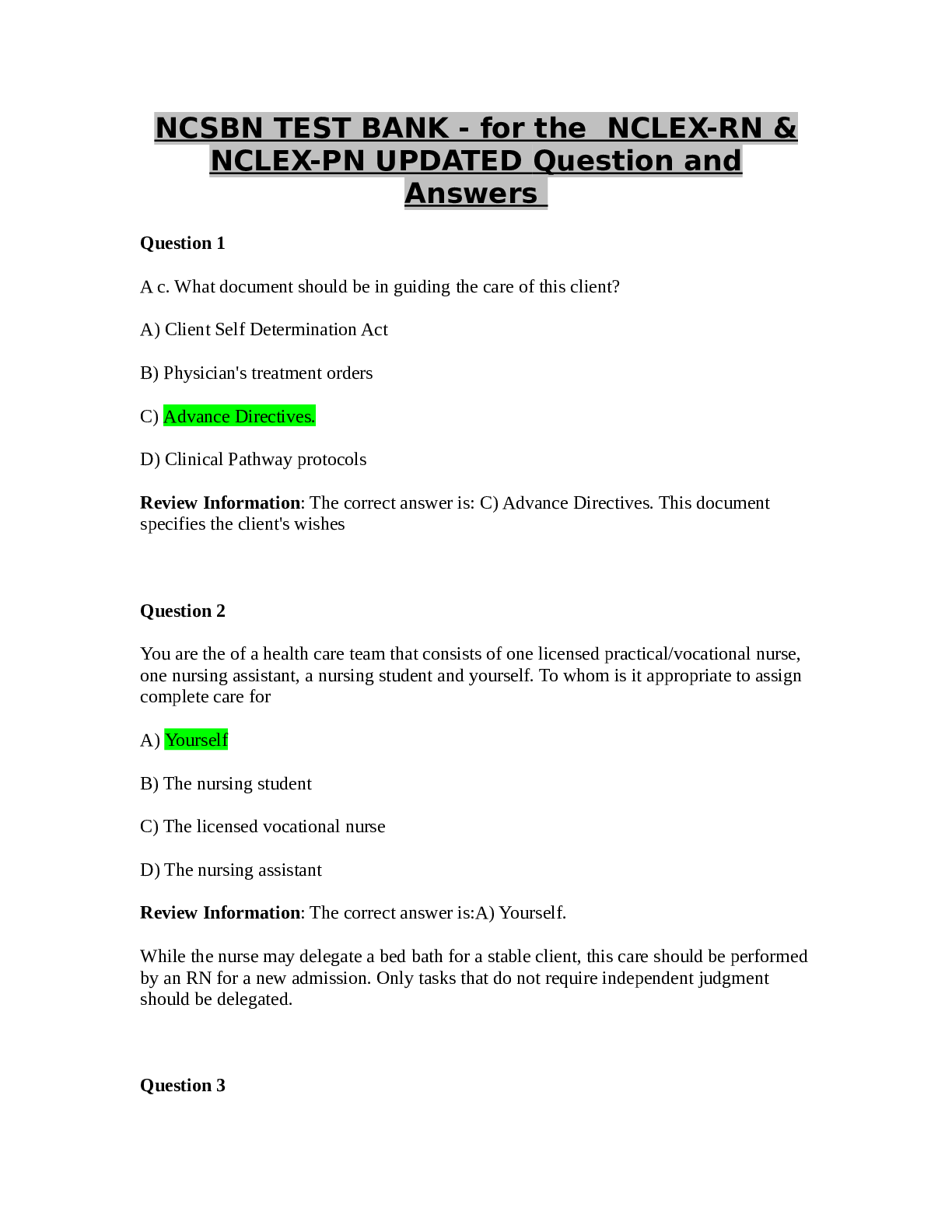
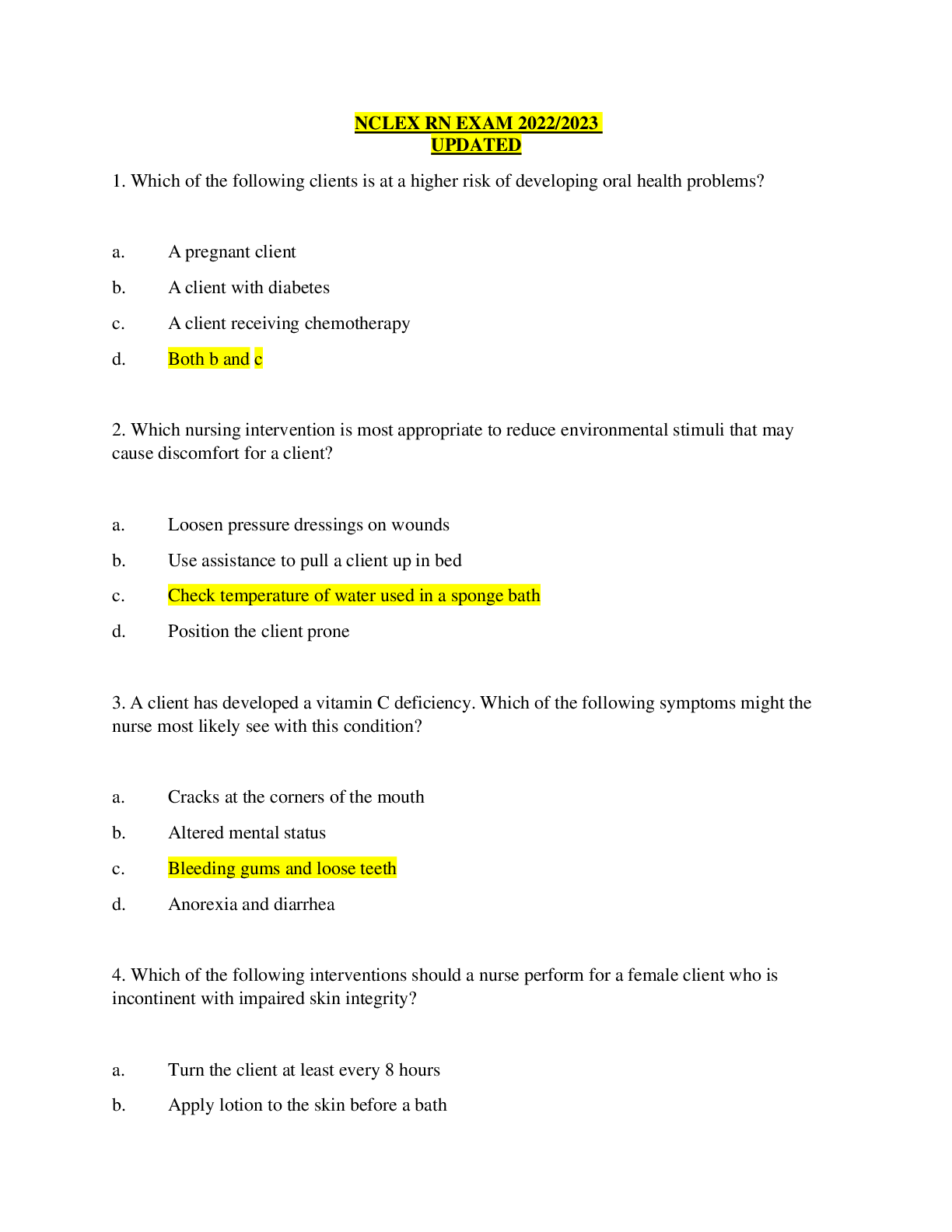
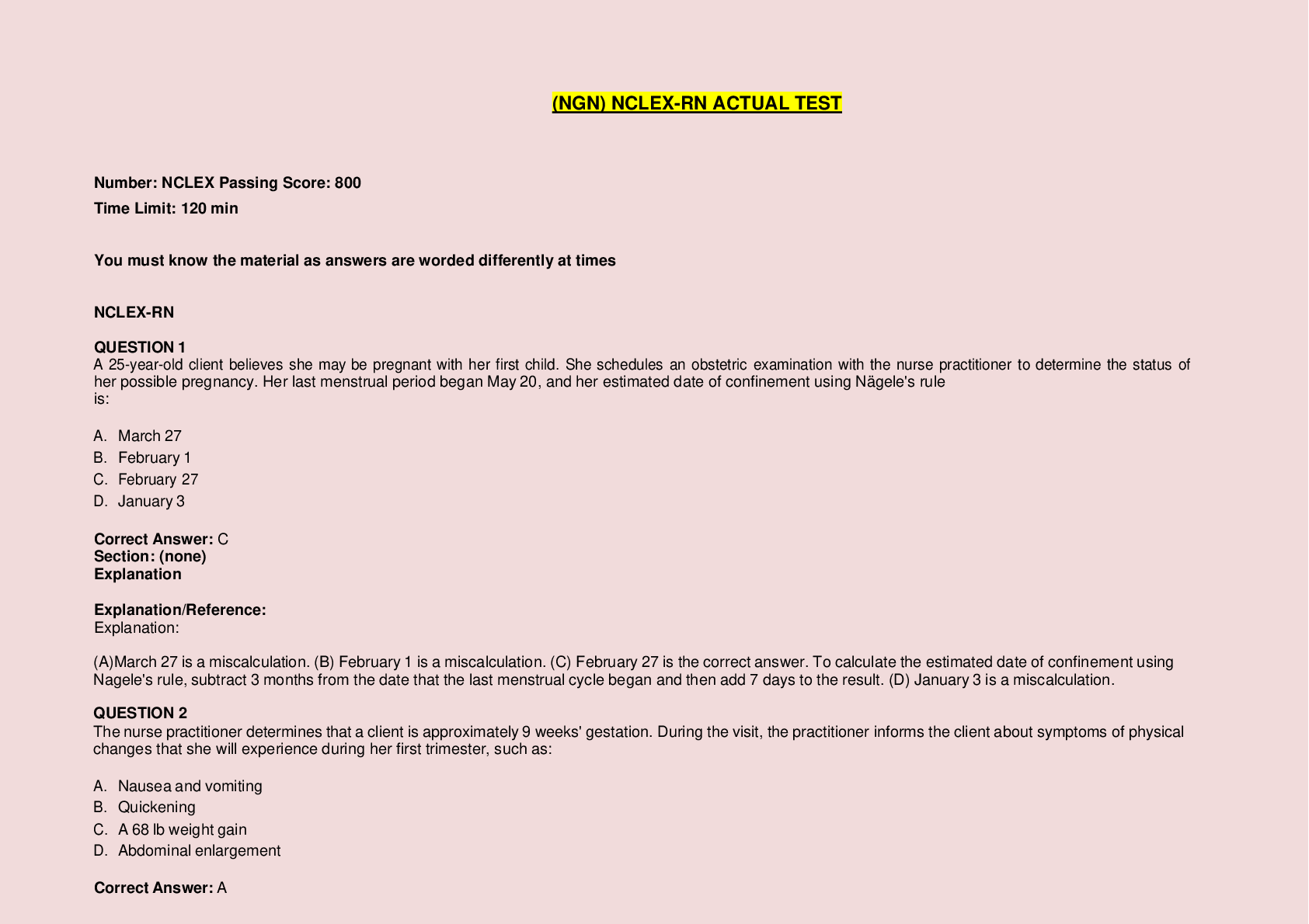
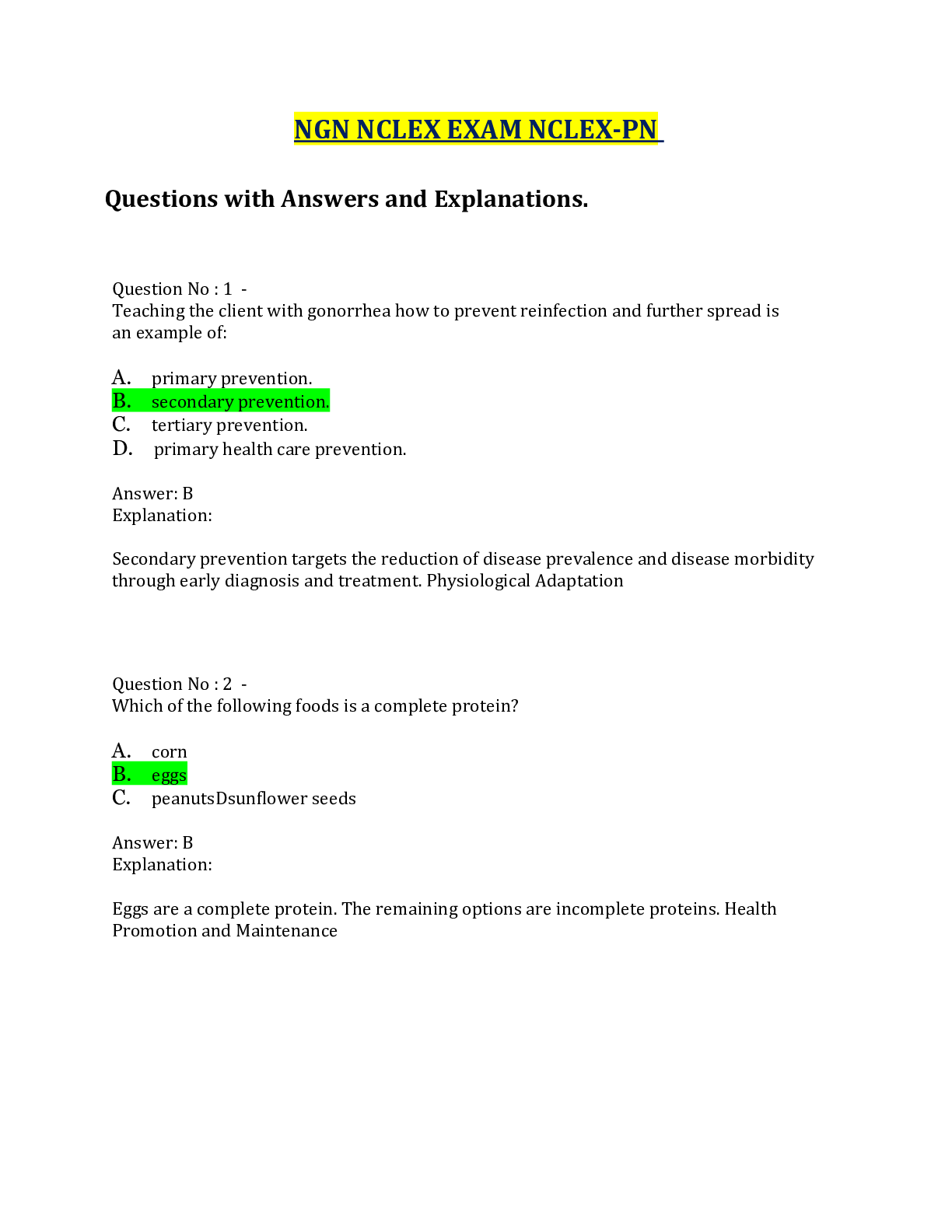

 JN21.png)
